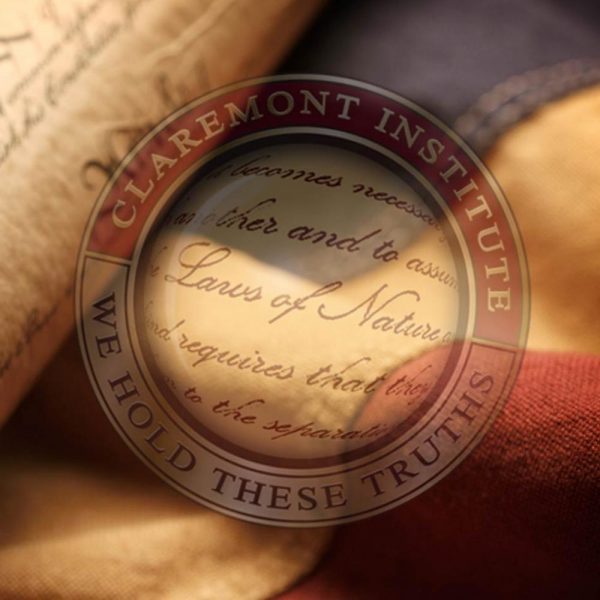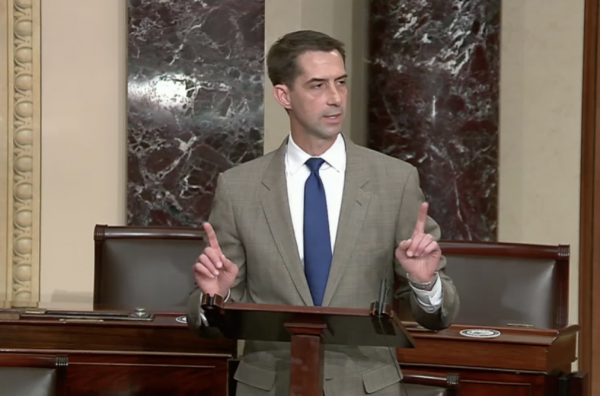Sokal Squared showed the West’s learned elite has succumbed to a corrupted creed.
Racial Piety Short-Circuits the Ivy Leagues

Yale is caught between what it should practice and what it must preach.
The federal lawsuits against Yale and Harvard are, in our opinion, long overdue but extremely significant. They are a good start towards revealing—and correcting—the Left’s increasingly tyrannical hegemony over American educational institutions. The notion of “disparate impact,” or the idea that any inequality between identity groups must result from bigoted discrimination, is driving much of our present regime crisis. If this faulty premise is accepted then political revolution, culminating in the destruction of the American regime and the Constitution as we’ve known it, is justified. In the midst of the election cycle the stakes are high indeed. We present the following article in an attempt to shed light on and provoke discussion about these recent promising legal cases and this troubling concept at the heart of our present crisis.—Eds.
I came to Yale at what was in retrospect a transitional time. In 2014, the year I matriculated, it had a reputation for being liberal, but not oppressively so, service-oriented, but not woke. If you wanted to protest, you could, and the administration certainly wouldn’t stop you. But all in all, debate and drama were more popular, and had much more social cachet, than activism—a fact which the activists seemed to find frustrating.
Then, in 2015, that hierarchy of extramurals was turned on its head. An email about Halloween costumes, a rumored “white girls only” party, and the accumulated influence of tenured radicals plunged campus into a multi-month struggle session from which the activists emerged victorious, with Yale acceding to nearly all of their demands. Throughout these months, and even after them, one charge in particular kept coming up: that Yale, which spends millions of dollars each year promoting racial diversity, is itself systemically racist, rigged against certain students to the benefit of others.
At the time, I found this charge somewhat implausible: Sure, some older professors might occasionally condescend to minority students; and sure, the ethnic food served in the dining halls could be overcooked and inauthentic. But given how much money was spent on cultural centers and diversity deans, grievance studies and race experts, the whole thing struck me as overblown.
But I was wrong. Yale is racist. The activists had a point. They were vindicated this month when the Justice Department found that Yale discriminates against white and Asian-American applicants, who are admitted at much lower rates than their black and Hispanic counterparts, despite having much higher scores.
Many schools use race as one small factor in a holistic review. Yale, on the other hand, “grants substantial, and often determinative, preferences” to African- over Asian-Americans, such that the latter are persistently underrepresented relative to their share of the applicant pool. Holding academic credentials constant, Asians “have only one-tenth to one-fourth the likelihood of admission” compared to Blacks; the university’s demographic profile has remained “remarkably stable” over time, suggesting outright racial quotas that violate civil rights law.
Like most people accused of racism, Yale President Peter Salovey immediately denied it. “The department’s allegation is baseless,” he said in a statement, before effectively confirming that it was not baseless at all: “By bringing people of different backgrounds, talents, and perspectives together, we best prepare our students for a complex and dynamic world.” Racial balancing may hurt Asians disproportionately, in other words, but it does not hurt them intentionally—and intention, Salovey seemed to assume, is what racism is all about.
Except that it’s not. In countless newsrooms and non-profits and diversity seminars, a new understanding has taken hold, which explicitly denies that intent is necessary for racism—or that a lack thereof proves racism’s absence. All that matters, writes the bestselling author Ibram X. Kendi, is whether this or that policy promotes “racial inequity.” A now-deleted graphic put out by the Smithsonian went even further, claiming that “intent counts” is a “white” (supremacist) belief.
Cognitive Dissonance
So on the definition of racism that prevails at places like Yale, any and all disparate impact is intrinsically racist, no matter how or why it came to be. That the goal of racial quotas is diversity, not discrimination—that they are intended to get Blacks in, not keep Asians out—is irrelevant inasmuch as they penalize certain races and not others. Furthermore, Asians have historically suffered all sorts of discrimination—the Chinese Exclusion Act, the internment of Japanese Americans, and, this year, hate crimes associated with COVID-19—of which Yale’s policy is yet another example. Even if one stipulates that only historically oppressed groups can be victims of racism, the fact is that Asian-Americans have historically been oppressed.
This objection applies to all affirmative action programs to some degree, not just Yale’s. Given a finite number of slots, college admissions are necessarily zero-sum: the more students you admit from one group, the fewer students you can admit from another. Any attempt at racial balancing, then, will impose disproportionate penalties on the highest performing racial groups; if disparate impact suffices for discrimination, it means that racial preferences are inherently discriminatory.
Or maybe it means that the premise is wrong, and intent does matter after all. Maybe we should look at why a policy was put in place—diversity in the case of Yale admissions, law-and-order in the case of stop-and-frisk—before denouncing it as racist on disparate impact grounds. Maybe we should avoid the r-word when confronted with complex trade-offs, about which reasonable people will disagree.
This way of thinking would improve our discourse around many issues (wealth inequality, police brutality, energy, environmentalism, the electoral college, health care reform, and, implausibly, traffic congestion) that have been racialized in recent years. But it would especially improve our debate over college admissions, where all policies, even notionally neutral ones, involve disparate impact by design.
Suppose Yale eliminated racial preferences, recruited athletes, and legacy leg-ups in order to make itself more meritocratic, more even-handed, more “fair.” Suppose it only looked at test scores and academic contests (INTEL, say) when deciding who “deserved” admission. The result would be demographic upheaval. Of those students who score within the 97th percentile on the math section of the SAT, 60% are Asian and 33% are white. The country as a whole, however, is 63% white and just 6% Asian. So if Yale used exclusively meritocratic criteria, Asians would outnumber whites by about 2:1 and blacks by about 30:1, despite comprising a much smaller share of the population nationally than either group.
Now imagine if every elite institution did this. White Americans, already experiencing demographic anxiety, would see their representation in the ruling class cut in half. Black Americans, already feeling dispossessed, would see theirs virtually vanish. And Asians, who make up 6% of the population, would soon make up 60% of elite college graduates, and by extension, 60% of the New York Times.
You think the legitimacy crisis is bad now? Max meritocracy would multiply it tenfold.
Which is why, for all the talk of diversity mandates and elite insecurity, there is a simpler explanation for the nascent turn against standardized testing: admitting students solely on the basis of merit would bring us to the brink of civil war—and deep down, everyone knows it. The relentless focus on inclusion, the knee-jerk distrust of disparities, the semantic slippage between “excellent” and “diverse”—these are all ways of legitimizing what is essentially an existential compromise, a set of non-meritocratic constraints that make meritocracy palatable within a multiracial milieu. Unfortunately, as our ongoing cancel-fest makes clear, they are also ways of delegitimizing debate about racial preferences, and whether we’ve struck the right balance between merit and representation.
We have not. The impending suit against Yale, and the pending suit against Harvard, testify to the brittleness of the bargain, which has become increasingly cynical and self-dealing. It was only a matter of time before a market-dominant minority noticed that it was not dominating the market, and used the winners’ own contradictory values—merit on the one hand, equality on the other—to challenge their ascendance. The truth is that elite institutions probably should admit more Asians (though not as many as are qualified) and fewer whites (though more than would get in on pure merit) while reducing but not fully eliminating preferences for other groups. They should also tilt the composition of whites much more heavily toward the rustbelt, where the sense of cultural disenfranchisement is especially strong.
What Comes Next
But all this presupposes that race quotas, and the disparate impacts that come with them, are a legitimate means of managing meritocracy. And it is that presupposition that Yale, Harvard, and Princeton have undermined for decades in the name of anti-racism, even as they embraced policies that (to their credit) were based on it.
The alternative—previewed by Portland’s summer of blood—is an overcredentialed overclass at war with the public it purports to serve. It’s a synthesis of cognitive and racial feudalism, with none of the noblesse oblige that tempered feudal orders of days past. Indeed, it’s a recipe for further backlash against meritocracy, which will put us at a distinct disadvantage vis-à-vis China, our republic’s most meritocratic adversary. (The PRC is more ethnically homogenous and more socially meritocratic than the West; one wonders if this is a coincidence.)
In other words, the alternative is the death of expertise and the death of democracy rolled into one. But both deaths will have been made possible by the experts—and (pleonastically) by the Democrats—who spent year after year warning they were imminent.
So I find myself rooting for my alma mater, to some halfhearted degree, for fear of what could happen should it lose. And yet, all things considered, I do not think that it deserves to win.
The American Mind presents a range of perspectives. Views are writers’ own and do not necessarily represent those of The Claremont Institute.
The American Mind is a publication of the Claremont Institute, a non-profit 501(c)(3) organization, dedicated to restoring the principles of the American Founding to their rightful, preeminent authority in our national life. Interested in supporting our work? Gifts to the Claremont Institute are tax-deductible.
This is where it gets bizarre.
Martin Luther King, Jr.’s “I Have a Dream” speech casts a golden thread across three centuries, connecting us to the source of the American dream.
A Statement from the Claremont Institute
In 2020, it's equality versus chaos.
The New York Times and cancel culture versus America.






